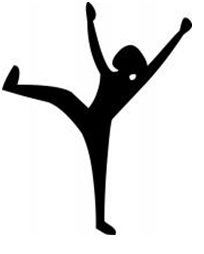Hormesis is defined as an adaptive response of cells and organisms to a moderate (usually intermittent) physical and/or physiological stress. For instance fasting is a form of hormesis where the temporary dietary stress can actually improve physical health.
“…observational clinical outcomes studies support the existence of a health benefit from intermittent fasting” – Horne et al 2015
Although I personally fast regularly, it is not something I promote or discuss with my patients as I feel it is beyond my scope of practice. However a hormesis that is well within my scope practice to promote is EXERCISE! Optimal exercise places stress on the body, which also triggers a healing response, once again thanks to hormesis!
“Hormesis plays a critical role in producing some major benefits derived from physical exercise.” – Li Ji et al 2010
That is why optimal exercise or physical activity (e.g. gardening, dancing, taking the stairs, etc.) can offer the ideal stimulus to promote adaptations that help healthy aging and improve the quality of life.
“Hormesis encompasses the notion that low levels of stress stimulate or upregulate existing cellular and molecular pathways that improve the capacity of cells and organisms to withstand greater stress.” – Peake et al 2015
Regrettably, the discomfort and/or the inflammation that is experienced post certain activities is often immediately attacked by using long-term rest/avoidance and NSAIDs, but when considering hormesis, is that really wise?

“…inflammatory mediators are key signaling molecules in muscle, and such strategies may mitigate adaptations to exercise.” – Peake et al 2015
So every day ask yourself, “Have I experienced my healthy dose of physical stress today?”
If not, then you better do something about it :o), cause your hormesis depends on it.

